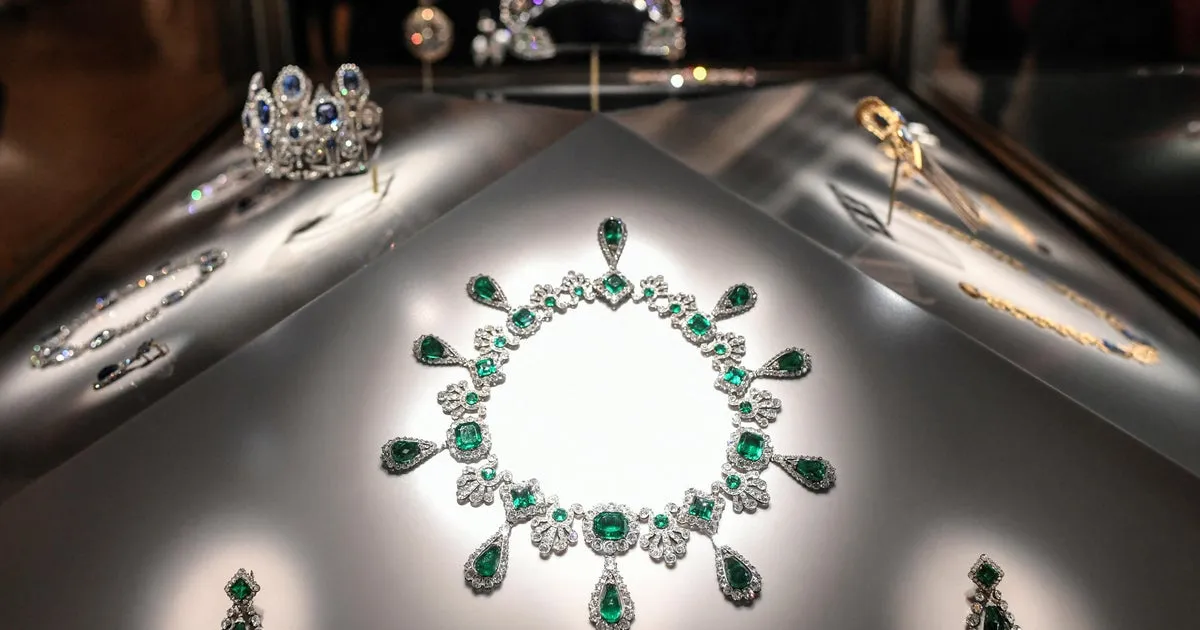
A dramatic heist at the Louvre, the world's most-visited museum, has left France reeling as crown jewels valued at an estimated €88 million, or $102 million, were stolen over the weekend. Paris prosecutor Laure Beccuau confirmed the staggering worth of the stolen items, excluding their immeasurable historical significance to France. As the investigation unfolds, around 100 investigators are on the case, working tirelessly to track down both the stolen gems and the culprits behind this audacious theft.
Prosecutor Beccuau emphasized the seriousness of the situation, warning that the thieves would not realize the full value of the jewels if they attempted to disassemble them. "We can perhaps hope that they'll think about this and won't destroy these jewels without rhyme or reason," she stated in an interview with RTL, expressing hope that the gems would be preserved.
The brazen nature of the robbery has raised significant concerns about security at the Louvre. Questions have surfaced regarding whether security cameras failed as the thieves utilized a basket lift to access the museum's facade, cut through a window, smashed display cases, and made their escape with the invaluable Napoleonic jewels early on Sunday morning. However, France's Culture Minister, Rachida Dati, defended the museum's security measures, insisting that everything was functioning correctly during the incident. "The Louvre museum's security apparatus did not fail, that is a fact," she told lawmakers in the National Assembly.
In the wake of the theft, Minister Dati announced the launch of an administrative inquiry alongside the ongoing police investigation to ensure complete transparency regarding the incident. Despite her assurances, she did not divulge how the thieves managed to execute their plan with the security cameras operational. Describing the theft as a "painful blow" for the nation, Dati remarked, "The robbery was a wound for all of us," highlighting the cultural significance of the Louvre as a showcase for French heritage.
Interior Minister Laurent Nuñez provided further context about the heist, noting that the museum's alarm was triggered upon the break-in at the Apollo Gallery. Police responded within two to three minutes after being alerted by a witness. Officials revealed that the entire operation lasted less than eight minutes, with the thieves spending under four minutes inside the museum.
The focus of the heist was on the gilded Apollo Gallery, home to the famed Crown Diamonds. In total, eight priceless objects were taken, including a sapphire diadem, a necklace, and a single earring linked to 19th-century French queens Marie-Amélie and Hortense. Other stolen items include an emerald necklace and earrings belonging to Empress Marie-Louise, as well as a reliquary brooch and the diadem of Empress Eugénie, along with her exquisite corsage-bow brooch from the 19th century.
Alain Bauer, a criminology professor at France's National Conservatory of Arts and Crafts, noted that the robbers left significant amounts of DNA at the scene, particularly on the crown of Empress Eugénie, which was inexplicably abandoned during their escape on motorcycles. "We will catch them," Bauer asserted regarding the thieves, but he expressed skepticism about recovering the stolen jewels. While the crown jewels hold immense historical value, experts suggest they would still fetch millions if sold on the black market.
The Louvre heist has not only shocked the nation but has also sparked a broader discussion about museum security and the protection of cultural heritage. As the investigation continues, many are left wondering what the future holds for these priceless treasures and the museum's reputation as a guardian of France's artistic legacy.